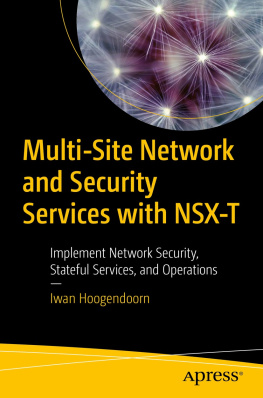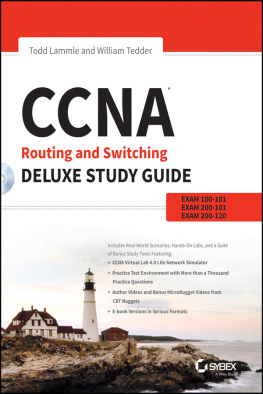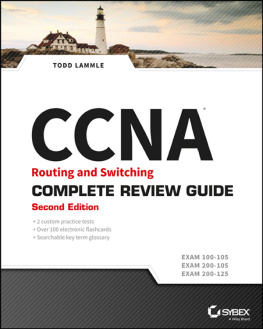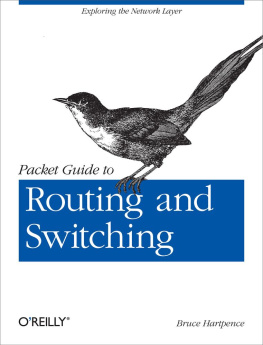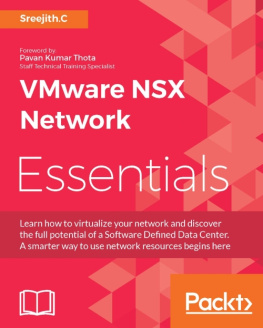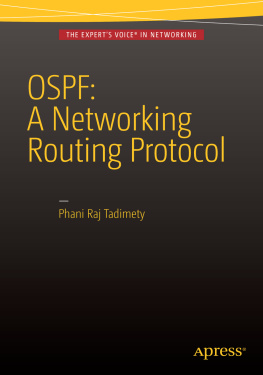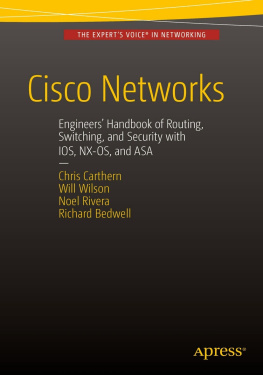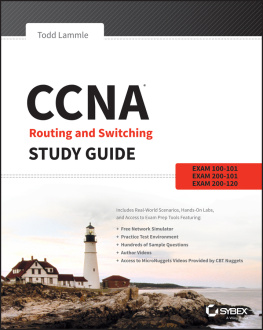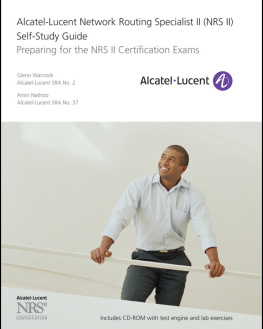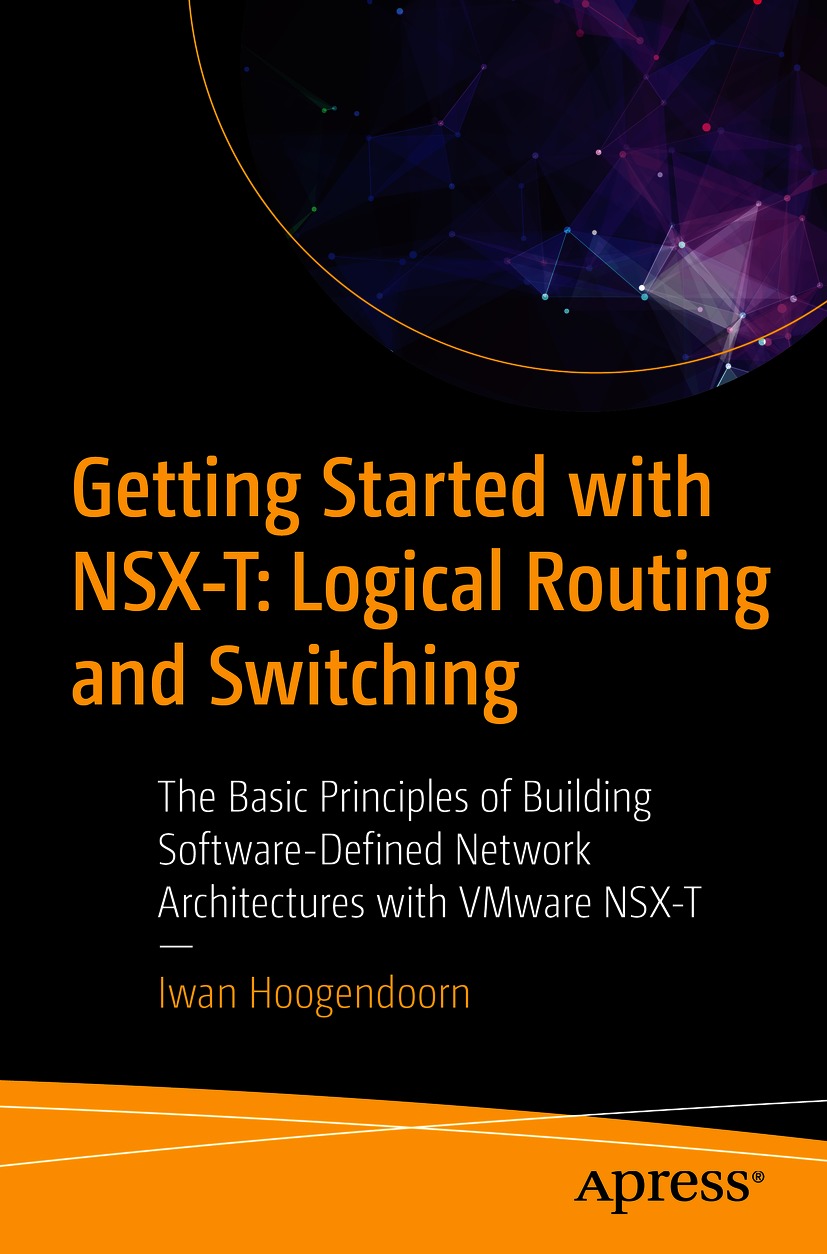Iwan Hoogendoorn
Getting Started with NSX-T: Logical Routing and Switching
The Basic Principles of Building Software-Defined Network Architectures with VMware NSX-T
1st ed.

Logo of the publisher
Iwan Hoogendoorn
Rotterdam, The Netherlands
Any source code or other supplementary material referenced by the author in this book is available to readers on GitHub via the books product page, located at www.apress.com/978-1-4842-6707-3 . For more detailed information, please visit http://www.apress.com/source-code .
ISBN 978-1-4842-6707-3 e-ISBN 978-1-4842-6708-0
https://doi.org/10.1007/978-1-4842-6708-0
Iwan Hoogendoorn 2021
This work is subject to copyright. All rights are solely and exclusively licensed by the Publisher, whether the whole or part of the material is concerned, specifically the rights of translation, reprinting, reuse of illustrations, recitation, broadcasting, reproduction on microfilms or in any other physical way, and transmission or information storage and retrieval, electronic adaptation, computer software, or by similar or dissimilar methodology now known or hereafter developed.
The use of general descriptive names, registered names, trademarks, service marks, etc. in this publication does not imply, even in the absence of a specific statement, that such names are exempt from the relevant protective laws and regulations and therefore free for general use.
The publisher, the authors and the editors are safe to assume that the advice and information in this book are believed to be true and accurate at the date of publication. Neither the publisher nor the authors or the editors give a warranty, expressed or implied, with respect to the material contained herein or for any errors or omissions that may have been made. The publisher remains neutral with regard to jurisdictional claims in published maps and institutional affiliations.
Distributed to the book trade worldwide by Springer Science+Business Media New York, 1 New York Plaza, Suite 4600, New York, NY 10004-1562, USA. Phone 1-800-SPRINGER, fax (201) 348-4505, e-mail orders-ny@springer-sbm.com, or visit www.springeronline.com. Apress Media, LLC is a California LLC and the sole member (owner) is Springer Science + Business Media Finance Inc (SSBM Finance Inc). SSBM Finance Inc is a Delaware corporation.
I dedicate this to my wife Shareen, the one that supports me the most in life.
You always allow me to follow my dreams and ambition, and because of this, I know I am not around most of the time. Thank you for giving me the space to become a better version of myself.
Without you, I could not perform and operate the way I do and achieve my goals and dreams.
I also dedicate this to my five-year-old daughter Zaara, who asks me the same questions every evening when I am typing stuff on my laptop.
Daddy, how long do you have to work?
Daddy, do you have a meeting?
Daddy, how many meetings do you have?
Daddy, are you coming to sleep after these meetings?
Introduction
Chapter provides a primer on how virtualization is used to create an SDDC. One of the central pillars of an SDDC is the use of software defined networking (SDN). To better understand NSX-T (VMwares SDN solution), it is best to first understand the components involved.
Chapter explains the NSX-T components and services that form the full network virtualization (NV) stack. It dives into the main use cases of NSX-T. By the end of this chapter, you will understand how the NSX-T components interact regarding the control, management, and data planes.
Chapter explains the installation steps of the NSX-T Manager on a vSphere infrastructure. When the NSX-T Manager cluster is fully installed in a clustered form, you will also learn how to replace the self-signed certificates, navigate the GUI, and perform some basic CLI commands.
Chapter explains some new terms that are used when we configure the data plane components. To prepare ESXi hosts to become NSX-T host transport nodes or create edge transport nodes in the form of virtual machines of bare metal servers, we first need to configure IP pools, uplink profiles, and transport zones. I explain what these components are and how they relate to each other. I also explain the differences between a VDS and N-VDS.
Chapter teaches you about the logical switching use cases and how logical switching is performed using NSX-T Segments. It is possible that layer 2 can be stretched using TEP, MAC, and ARP tables. This chapter also teaches you how GENEVE encapsulation works and how the segments are configured on the data plane using the NSX-T GUI. This chapter ends by teaching you about different segment profiles that can be applied to a segment or a segment port to configure more granular settings related to a specific segment or segment port. This chapter also explains how BUM traffic is handled using two different replication methods.
Chapter is dedicated to the NSX-T edge transport nodes and NSX-T edge clusters.
Chapter helps you understand the architecture, routing features, and components needed to design and implement a layer 3 network using NSX-T.
Chapter explains VRFs use cases, benefits, and limitations, as well as the configuration and validation of VRF Lite. You will also learn about EVPN architecture and understand the use cases and benefits related to EVPN.
Chapter explains the multicast technology and covers the benefits and use cases of it at a general level. You will also learn about the multicast capabilities that NSX-T offers and how to configure it.
Chapter describes the use cases and operation of logical bridging. It explains the differences between routing and bridging. It also explains how to configure logical bridging by creating a bridge profile and a bridge-backed segment to bridge a virtual NSX-T segment with a physical network.
Acknowledgments
Thank you, VMware, for allowing me to write this book.
Thank you, VMware #vExpert community, for the amount of knowledge you share.
Thank you, Babak and Jerry, for working together with me on this book and making it happen.
Thank you, Apress, for allowing me to write this book and publishing it on my behalf.
Table of Contents
About the Author
Iwan Hoogendoorn
started his IT career in 1999 as a helpdesk agent.
Soon thereafter, Iwan started to learn Microsoft products and that resulted in earning his MCP, MCSA, MCDBA, and MCSE certifications.
While working as a Microsoft Systems Engineer, Iwan developed additional skills and knowledge in computer networking. Networking became his passion and this passion resulted in learning networking with Cisco products.


